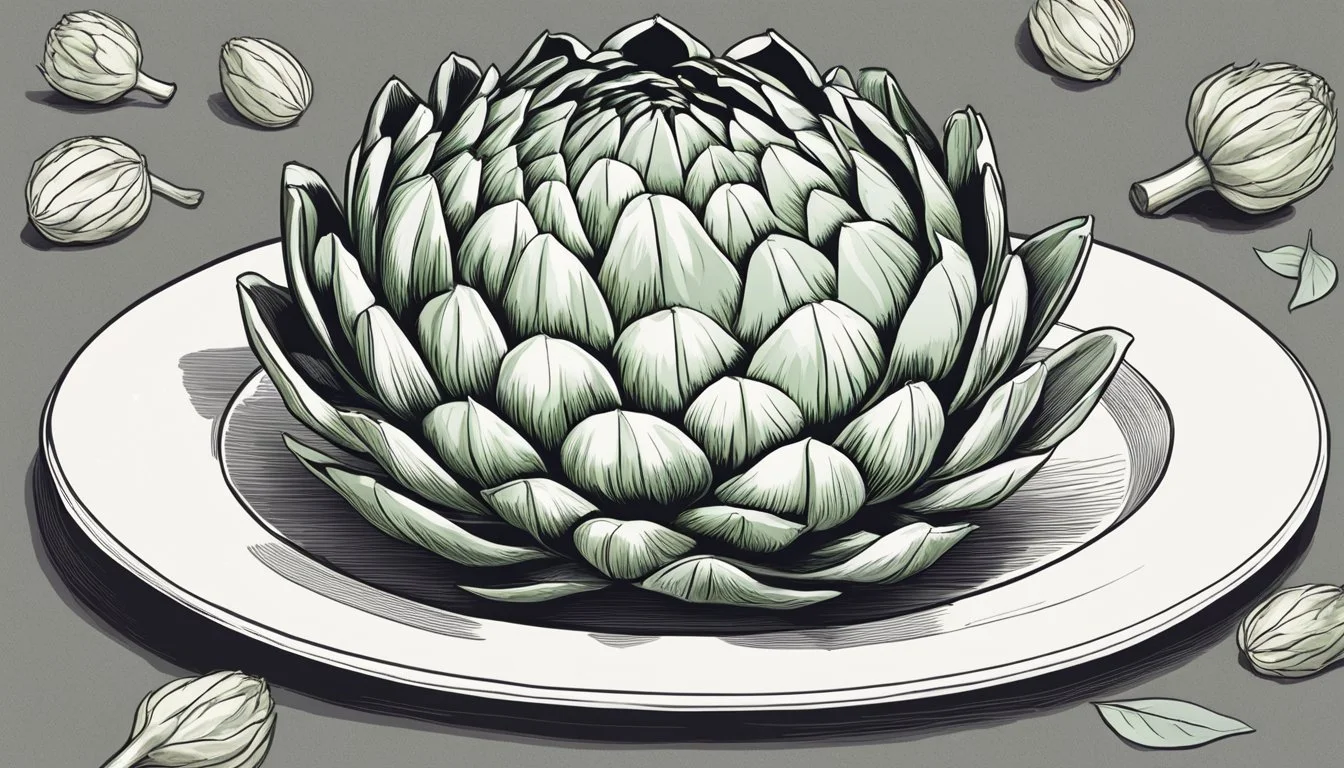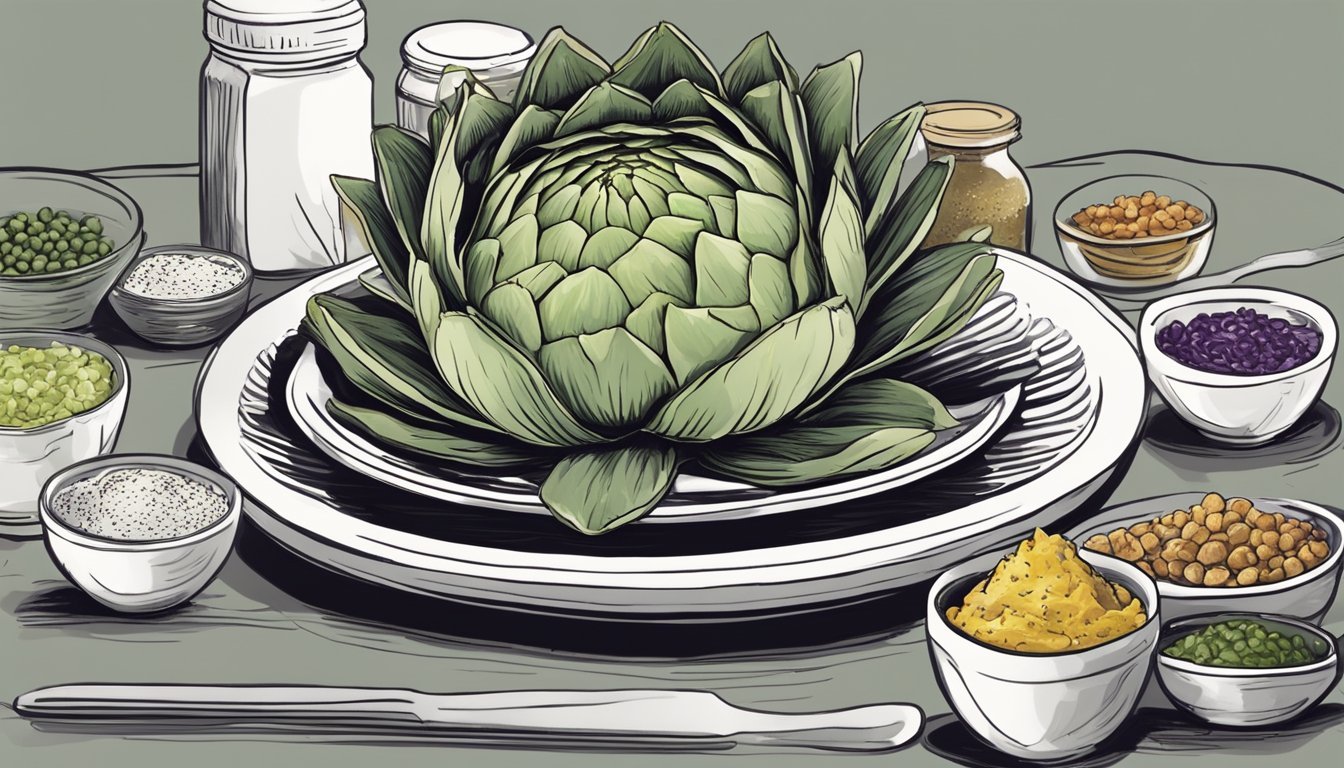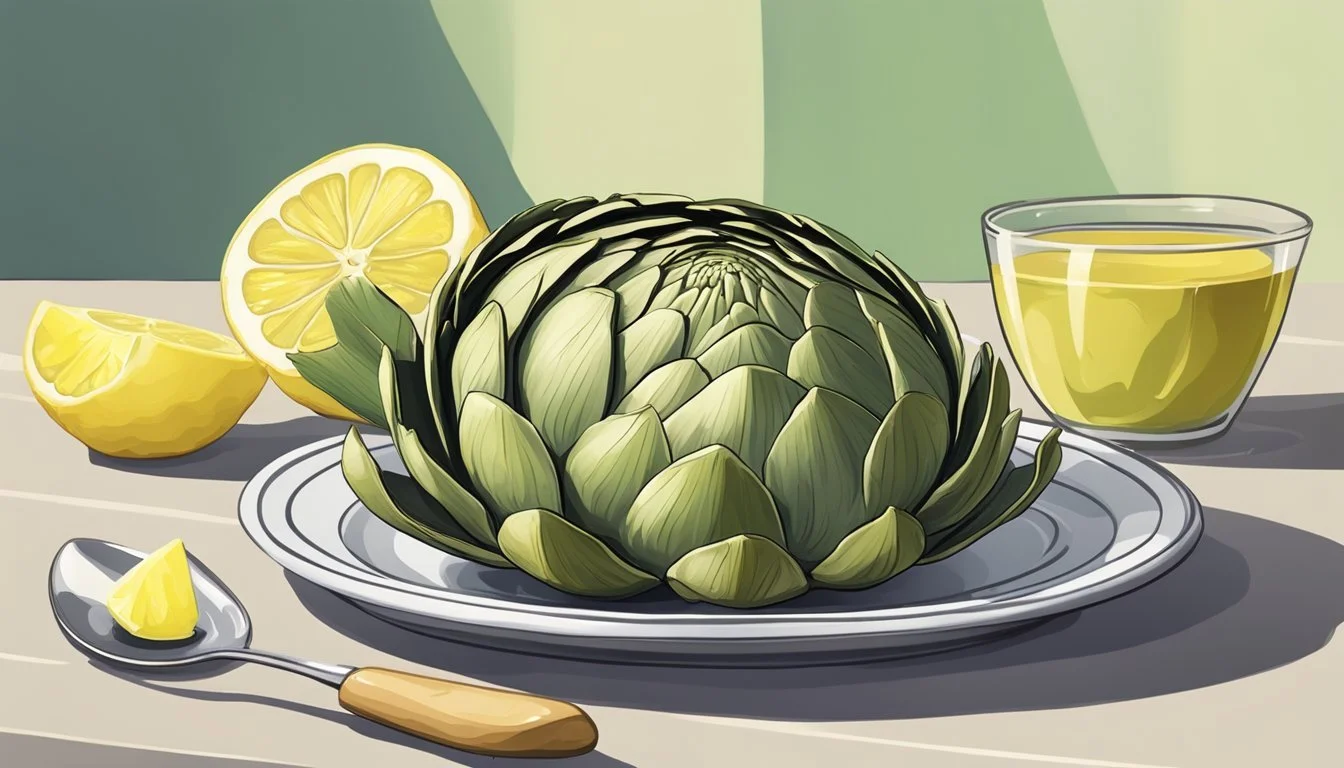How do you eat artichokes?
A Step-by-Step Guide to Enjoying this Unique Vegetable
Eating an artichoke is a unique culinary experience often met with curiosity and sometimes a bit of confusion due to its intricate structure. Artichokes (What wine goes well with artichokes?) are a variety of a species of thistle cultivated as food. The edible portions are the fleshy lower sections of the leaves and the base, known as the heart. Preparing and consuming this distinctive vegetable requires a series of steps to ensure one can fully enjoy its delicate, nutty flavor.
Before indulging in an artichoke, proper preparation is essential. It often begins with trimming the stem and cutting off the sharp leaf tips, to make handling safer and more comfortable. The artichoke is then typically cooked through steaming, which gently cooks the vegetable without making it too soggy or waterlogged. It's critical to monitor the water level and to steam the artichokes until they are tender, which can be tested by pulling a leaf or inserting a knife into the base.
When it's time to eat the artichoke, the leaves are plucked off one by one and the fleshy base of each leaf is eaten. This is done by pulling the base through the teeth to remove the soft, delicious portion. As one gets closer to the center, the leaves become more tender and entirely edible. At the heart of the artichoke lies the choke, a mass of fine, hair-like fibers that should be removed and discarded. What remains is the prized artichoke heart, renowned for its richer taste and smoother texture, which can be enjoyed on its own or as part of various recipes.
Selecting Artichokes
Selecting the freshest and best artichokes is crucial for enjoying this unique vegetable to its fullest. One should focus on its physical attributes and freshness indicators.
Choosing the Right Vegetable
When choosing artichokes, one should look for vegetables that feel heavy for their size and have firm, tightly closed leaves. These are signs of freshness and indicate that the artichoke has maintained its moisture and is not drying out. The leaves should 'squeak' slightly when pressed together, another indication of freshness. Additionally, while artichokes come in both green and purple varieties, the color does not necessarily indicate quality; both can be equally delicious when selected properly.
Seasonality: Artichokes are at their peak during spring and fall, which is the best time to purchase them.
Locale: They thrive in cool climates, so one might find the freshest artichokes in regions known for cooler growing conditions.
Understanding the Different Parts
The artichoke consists of several parts, each with its own characteristics:
Leaves: The outer leaves tend to be tougher and require preparation such as trimming of the tips.
Heart: It is located at the bottom of the artichoke and is known as the most tender and flavorful part. One should ensure that the bottom is not spongy or dry, which can indicate age or dehydration.
Stem: A healthy artichoke will have a stem that is sturdy and not overly dried out or woody. It should be an extension of the artichoke, not an afterthought.
In selecting artichokes, one should not only choose a healthy-looking vegetable but also consider how it was grown, as artichokes that have been allowed to mature slowly in a suitable climate will often yield the best taste and texture.
Preparation Basics
Before one can enjoy the unique taste and texture of artichokes, it is essential to properly prepare them. This involves trimming the artichoke of its sharp parts and ensuring it's clean, as well as removing the inedible choke for a pleasant eating experience.
Trimming and Cleaning
One begins by rinsing the artichoke under cold water to remove any debris. They will need a sharp knife or a pair of kitchen scissors to trim the artichoke. Using the knife, they cut off about an inch from the top of the artichoke to remove the sharp tips. If using scissors, they individually snip the thorny tips off each leaf. The stem is typically trimmed close to the base of the artichoke to enable it to stand upright during cooking; however, some recipes may call for leaving a longer stem attached.
Removing the Choke
After cooking the artichoke, the removal of the hairy choke is the next key step, revealing the heart which is widely considered the most flavorful part. To expose the choke, they pull back the inner leaves and use a spoon to scoop out the choke. One should take care not to remove the heart. This choke is not edible and should be discarded. Using the spoon, they delicately work around the center to ensure all the fuzzy parts are completely removed.
Cooking Methods
To ensure artichokes are prepared perfectly, they should reach a tender state using various techniques. Each cooking method may enhance different flavors and textures.
Steaming Artichokes
Steaming involves cooking the artichokes in a pot with a few inches of water, using a steamer basket to hold them above the water line. A tight-fitting lid is essential to trap the steam. Adding lemon juice and a bay leaf to the water can infuse the artichokes with additional flavor. They typically become tender in 25 to 45 minutes.
Boiling Artichokes
Boiling requires submerging artichokes in a pot of salted water. They should be boiled until tender, which can be checked by piercing with a knife. Once done, they need to be drained well. Boiling may take approximately 25 to 35 minutes depending on their size.
Grilling Artichokes
Grilling artichokes creates a smoky flavor and appealing char marks. To grill, first steam or boil them until they are halfway cooked, then cut in half and brush with oil. Place on the grill, cut side down, and cook until they are tender and show signs of browning.
Using a Microwave
Artichokes can also be cooked quickly in a microwave. Place them in a microwave-safe dish with a bit of water, cover with a lid or plastic wrap, and microwave on high power. Cooking times vary, but usually, it takes around 6 to 8 minutes.
Try Roasting
Roasting artichokes in the oven imparts caramelized flavors. After cutting and cleaning, drizzle the artichokes with oil and season, then roast in a preheated oven until the edges are browned and the texture is tender, which can take about 25 minutes at 425°F (220°C).
Pressure Cooking
For a quick alternative, the pressure cooker is effective. Add water to the cooker with a steaming basket, place the artichokes inside, and cook under high pressure. It can take around 5 to 15 minutes depending on the artichokes' size and the pressure cooker model. Always allow the pressure to release naturally before opening the lid.
Eating Techniques
When consuming an artichoke, the process is uniquely methodical, starting with the outer leaves and moving inwards towards the heart, each part offering a different taste and texture experience.
Approaching the Outer Leaves
One begins by pulling away the outer leaves one by one, dipping the base in a sauce if desired. The edible part of these leaves is at the base, which can be eaten by placing it between the teeth and pulling, removing the soft, pulpy portion.
Enjoying the Heart
After removing all the leaves, one reaches the artichoke heart, which is considered the most flavorful part of the vegetable. It's important to remove the fuzzy fibers sitting atop the heart, known as the choke, as they are not edible. The heart itself can be cut into pieces and enjoyed as is, or with a dip.
Tackling the Inner Leaves and Stem
The inner leaves, which are softer and more tender than the outer leaves, can be eaten whole. They are closer to the heart and often do not require being stripped with the teeth. The stem of the artichoke, an extension of the heart, is also edible when peeled and cooked until tender.
Entire Artichoke Edibility
While the tips of the artichoke leaves are sharp and fibrous, they are often trimmed before cooking. Immature artichokes don't have developed chokes, making them entirely edible, whereas more mature ones have developed fibrous chokes that are inedible. The marinated artichokes commonly found in stores are usually hearts and inner leaves, as these are the most enjoyable parts of the vegetable due to their tender and flavorful qualities.
Dips and Accompaniments
Artichokes are often enjoyed with a variety of dips and accompaniments that enhance their natural flavor. Each sauce can be tailored to individual tastes, often involving ingredients like mayonnaise, butter, and lemon to create a rich and complementing taste experience.
Creating a Dipping Sauce
The foundation of a good artichoke dipping sauce typically starts with mayonnaise. To this, various ingredients can be added for flavor depth. For instance, balsamic vinegar can be mixed with mayo to add a zesty twist. Garlic and lemon juice are also popular additions, contributing a bright and aromatic quality to the sauce.
Example Dipping Sauce:
1/4 cup mayonnaise
1 tbsp balsamic vinegar
1 tsp minced garlic
Squeeze of fresh lemon juice
A pinch of salt
Whisk these ingredients together until smooth and adjust seasoning to taste.
Butter and Its Variations
Melted butter serves as a classic dip, providing a rich and simple counterpoint to the artichoke's subtle taste. Elevating butter further, a splash of lemon juice or a sprinkle of salt can go a long way. For those interested in more complexity, herbed butter adds layers of flavor with minimal effort.
Herbed Butter Variation:
1/2 cup melted butter
1 tbsp chopped fresh herbs (e.g., parsley or dill)
A pinch of salt
Combine the butter with herbs and salt, then serve warm alongside steamed artichoke leaves.
Exploring Healthier Options
For a healthier alternative to creamy sauces, options such as olive oil-based dips prove to be equally delightful. Mixing olive oil with a bit of vinegar and herbs creates a light yet flavorful sauce that doesn't overpower the taste of the artichoke.
Olive Oil Dip:
1/4 cup olive oil
2 tsp vinegar (white, balsamic, or red wine)
1 tsp dried Italian herbs or fresh chopped herbs
Salt to taste
Blend the ingredients until the herbs are well distributed. Use this dip to enjoy the nuanced flavors of artichoke leaves without the heaviness of mayonnaise or butter.
Nutritional Benefits
Artichokes are a powerhouse of nutrition, offering a range of health benefits primarily due to their high fiber content and rich vitamin and mineral profile.
Fiber and Fullness
Artichokes are notably high in dietary fiber, which is essential for healthy digestion. A medium-sized artichoke contains approximately 7 grams of fiber, contributing to a feeling of fullness and aiding in weight management. The fiber in artichokes supports the digestive system and can help maintain lower cholesterol levels.
Vitamins and Minerals
Artichokes are packed with essential vitamins and minerals that are crucial for overall health. They are particularly rich in:
Vitamin C: About 10% of the recommended daily value, which is important for immune function and skin health.
Vitamin K: Nearly 20% of the average daily value, essential for blood clotting and bone health.
Folate: With 107 micrograms, this B-vitamin supports DNA synthesis and is particularly important during pregnancy for fetal development.
Magnesium: Contributes to muscle and nerve function, blood glucose control, and blood pressure regulation.
Additionally, artichokes provide smaller amounts of other nutrients such as potassium, which helps regulate heart rate and blood pressure, and iron, which is necessary for transporting oxygen in the blood. Antioxidant properties attributed to artichokes also play a role in preventing cell damage.
Artichoke Recipes
Artichoke recipes range from simple dips to complex dishes, but they are all rooted in the versatile use of artichokes and artichoke hearts. California, known for its abundant artichoke production, often inspires these recipes.
Traditional Artichoke Dip
One can never go wrong with a Traditional Artichoke Dip, a creamy and savory staple at gatherings. The dip consists of tender artichoke hearts, typically from California, mixed with ingredients such as mayonnaise, cream cheese (how long does cream cheese last?), garlic, and Parmesan cheese. The key to a successful dip lies in the balance of these components, ensuring a smooth yet robust flavor profile.
Ingredients:
Artichoke hearts: 1 cup (chopped)
Mayonnaise: 1/2 cup
Cream cheese: 1/2 cup (softened)
Garlic: 1 clove (minced)
Parmesan cheese: 1/2 cup (grated)
Preparation: Combine all ingredients in a bowl, transfer to a baking dish, and bake at 375°F (190°C) until golden and bubbly, about 20-25 minutes.
Incorporating Into Meals
Artichokes are a fantastic ingredient for adding substance and flavor to meals. They can be steamed, grilled, or sautéed and incorporated into a variety of dishes. Artichoke hearts, in particular, are a sought-after component for pastas, pizzas, and salads. When incorporating artichokes into meals, it is essential to cook them until tender, and then they can be mixed with other ingredients or stand as the focal point of the dish.
Steamed Artichoke Hearts:
Steam whole artichokes until the outer leaves can easily be pulled off.
Remove the artichoke hearts and slice them for use in salads or as a pizza topping.
Grilled Artichokes (What wine goes well with grilled artichokes?):
Cut artichokes in half and remove the choke.
Brush with olive oil and grill until char marks appear for a smoky addition to any meal.
Precautions and Considerations
When eating artichokes, one should take care to handle them safely and be mindful of possible allergic reactions. This section focuses on the necessary precautions to ensure a safe and enjoyable experience.
Proper Handling and Safety
Artichokes require proper handling to avoid injury due to their sharp leaf tips. It is recommended to use a knife to trim these tips before cooking. Additionally, utensils such as a fork, spoon, or tongs should be used to handle and eat the cooked artichoke to prevent burns or mess. There's the added consideration of bees that are attracted to the artichoke flower, so one should be cautious during the initial preparation if the artichokes are fresh from the garden.
Allergic Reactions and Sensitivities
Artichoke consumption can cause adverse reactions in individuals with a sensitivity to certain plants or a history of allergies to other vegetables in the thistle family. Symptoms may include gastrointestinal distress or a histamine reaction. It is less common but possible for individuals to experience allergic reactions from handling or eating artichokes due to substances like cynarin. Additionally, those who are sensitive to FODMAPs should consume this vegetable cautiously, since artichokes contain fructans. Finally, when flavoring artichokes, one should be aware of allergies to common seasonings like garlic to prevent any allergic responses.





